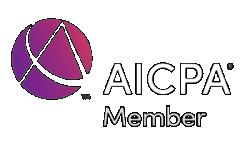The Committee for a Responsible Federal Budget is an independent, non-profit, and bipartisan organization that scrutinizes federal budgets and fiscal plans. When it examined President Biden’s tax plans, the Committee projected the plans could generate up to $3.67 trillion over the next decade. The top 1% of earners are likely to see a tax increase of 13%-18% of after-tax income. Here’s a quick summary of where the money would likely come from:
- 44% Corporations
- 27% High-wage earners (income tax)
- 22% High-wage earners (social security payroll tax)
The rest would come from bank fees and other assessments.
Biden Tax Plan Proposals
As you can see, corporations and high-wage earners will bear the brunt of the tax cuts. Here are the top 10 changes being proposed by the Biden Administration.
- Higher Maximum Rates
Raise the top individual federal tax rate on ordinary income and net short-term capital gains for high wage earners to 39.6% from 37%. - Limit Deductions
High earners would see deductions limited. - Increase Rates on Long-Term Capital Gains
Those with incomes above $1 million would see long-term capital gains taxed at the same 39.6% maximum rate as ordinary income. This nearly doubles the current effective rate when you include the 3.8% Net Investment Income Tax (NIIT) for high earners. - Reinstate Social Security Taxes for High Earners
For 2021, the Social Security tax ceiling was scheduled to move from $137,700 to $142,800. Once wage earners hit that ceiling, they no longer have to pay social security taxes. President Biden’s tax plan would reinstate the 12.4% social security tax on net income above $400,000. - Eliminate the Basis Step-Up for Inherited Assets
This proposal would eliminate the ability to reassess inherited assets to fair market value as of the date of death, meaning recipients would become responsible for the tax on all of the assets’ appreciation that occurred both before and after death. - Eliminate Other Real Estate Tax Breaks
This proposal would do away with the $25,000 exemption for passive rental losses, disallow faster depreciation write-offs for real property, and eliminate the Qualified Business Income (QBI) deduction for rental real estate. - New or Increased Tax Credits
First-time homebuyers would get a refundable tax credit of up to $15,000. There would also be a credit to aid low-income renters to ensure rent doesn’t exceed 30% of monthly income. The child care credits would also be increased from $2,100 to $4,200 with phase-outs starting at an income level of $125,000. - Higher Corporate Taxes
The 2017 Tax Cuts and Jobs Act (TCJA) reduced the 35% effective rate for corporations to a flat rate of 21%. Biden’s plan would increase the corporate tax rate to 28%. It would also set a minimum tax of 15% on corporations that pay little or no federal income tax despite earning $100 million annually. - Eliminate Section 1031
This proposal would get rid of the ability to defer capital gains taxes on real property swaps.
Preparing for Biden Administration Tax Plan Changes
While these proposals may not wind up in any final tax legislation, it does appear that there will be substantive changes to the tax law. With the current political makeup in Washington, a Democratic-controlled Congress is likely to endorse them.
So, what tax planning should you be doing now? Many of the options to reduce your potential tax liability for 2020 have passed now that we’re in a new year. However, there are still some things worth considering.
Tax-Advantaged Investments
Besides contributing to a 401(k), IRA, or other retirement plan, there are other options to reduce your future tax liability. For example, cash value life insurance may be structured to use post-tax funds, but the funds grow tax-free until withdrawn. Most municipal bond interest income is exempt from federal taxes. Some are also exempt from state or local tax.
Income Splitting
If you’re running a family business, you may be able to take advantage of income splitting (or income shifting) to lower your overall tax liability. Income would be shifted from a family member in a high-tax bracket to another family member in a lower one, by hiring and paying a family member or providing non-voting stock. This takes careful planning, however.
Opportunity Zones
One campaign promise President Biden made was to allow the deferral of capital gains from the sale of personal or business property if the proceeds are invested in Quality Opportunity Funds (QOFs). If you were to stay invested for 10 years or more, this would make any gain from the QOF funds tax-free.
Have Questions?
These are just a few strategies that may apply to changes to the tax code. By the time these proposals get shaped into a bill and pushed through Congress, lots of changes can (and will) occur. It’s important to stay on top of the latest iteration and check with a professional tax and legal advisor to understand your options and maximize your benefits.
If you’re concerned about how these changes may affect you or your business, want to explore other strategies to limit your tax liability, or need help with your tax return preparation, The Law Offices of Lawrence Israeloff, PLLC can help. Get in touch with us today to discuss your tax strategy.





